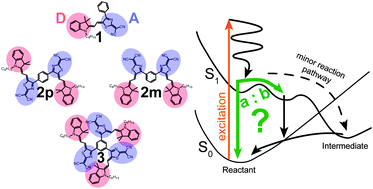The interactions between different chromophores within a molecular system are crucial to comprehend relaxation dynamics, regardless if one deals with small molecules or larger systems like polymers or aggregates. We investigate a series of merocyanine molecules that contain one, two or three highly dipolar (μg = 13.1 D) dyes in close vicinity to study the influence and origin of interactions, e.g., electronic, vibronic, or the formation of excitons. Relaxation dynamics are probed via transient absorption and coherent two-dimensional spectroscopy. Furthermore, we derive a general relaxation model which can be applied for all merocyanines under investigation and can be used as a reference point for other dipolar donor–acceptor dyes. The intramolecular charge-transfer state of the monomeric merocyanine is stabilized by dipolar neighbor molecules in the bis- and tris-chromophoric dyes.
